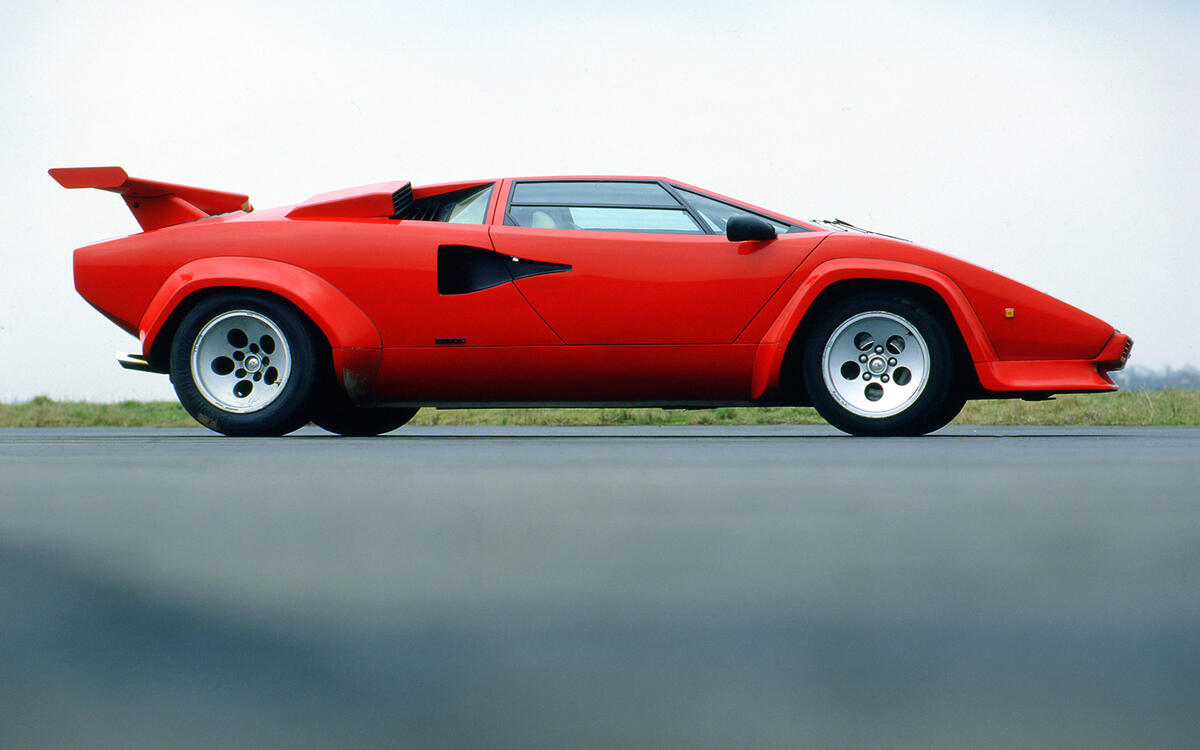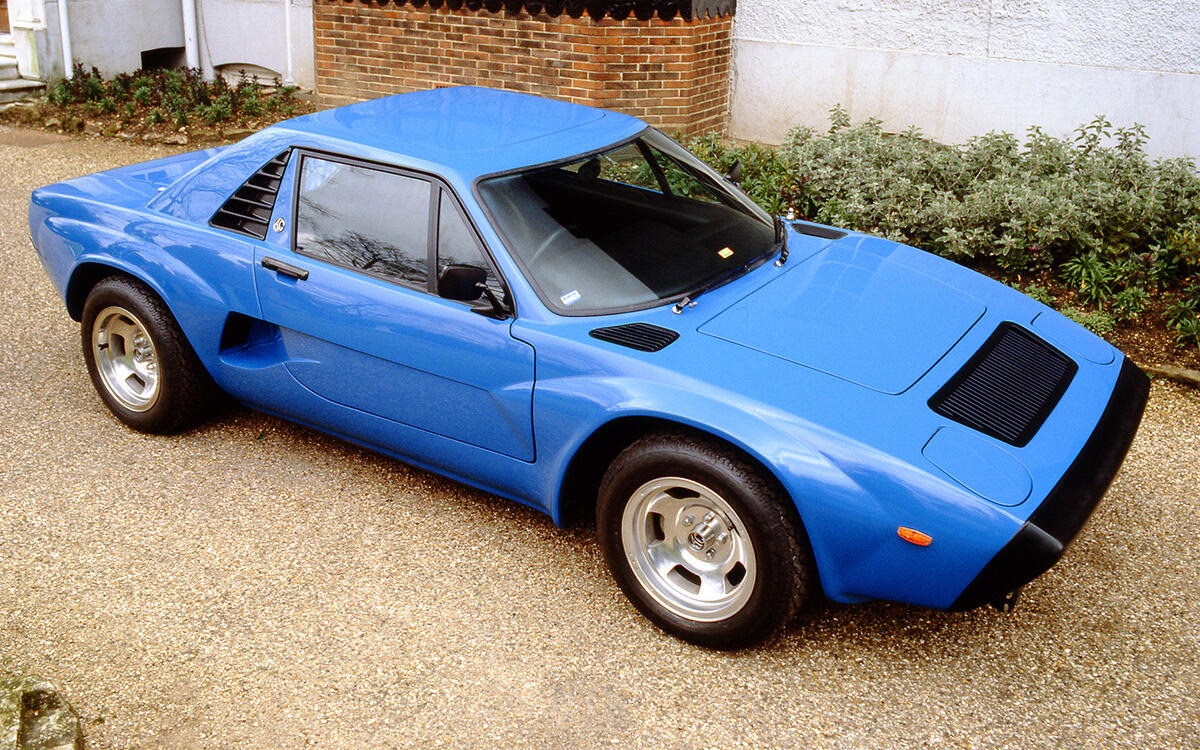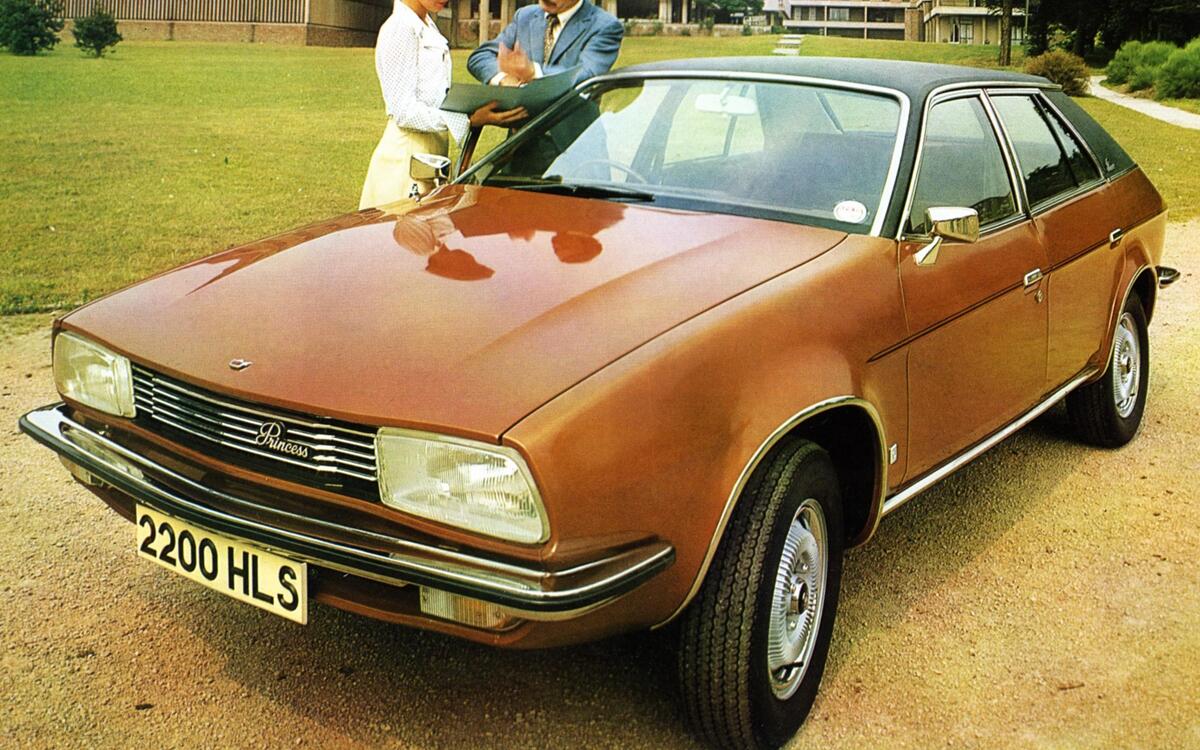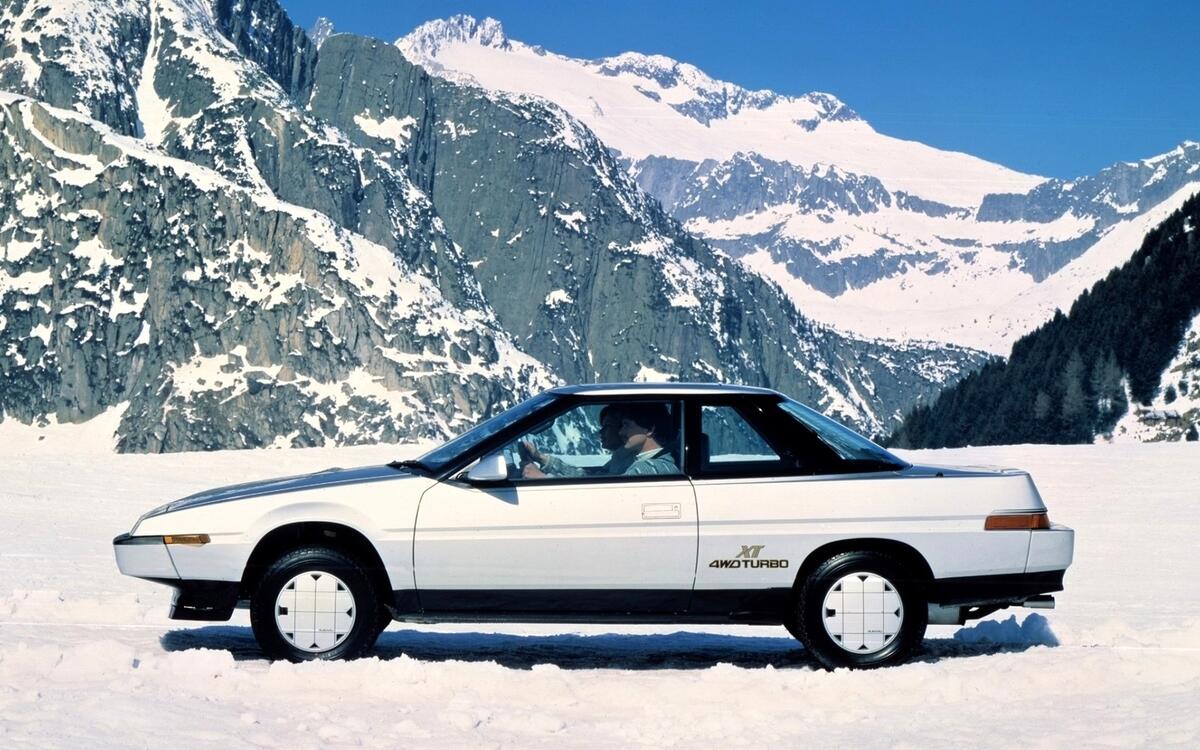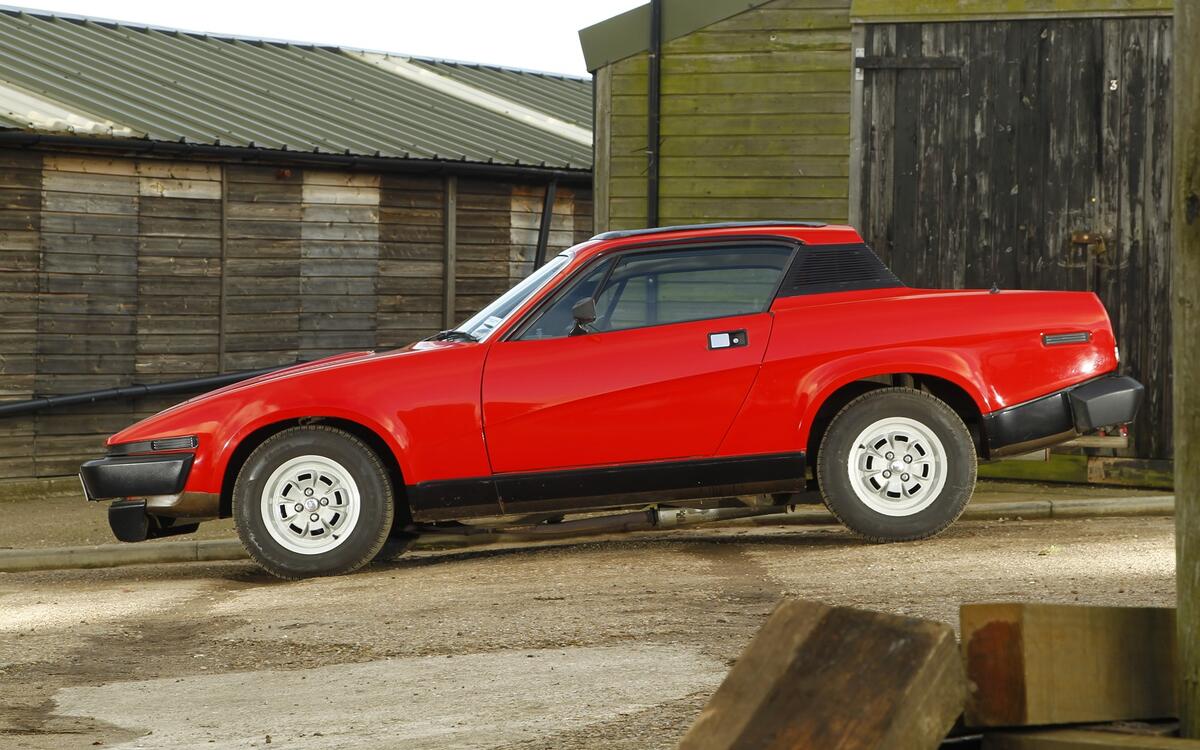 Slide of
Slide of
The wedge school of automotive design divided opinion.
But it certainly created some of the most stand-out shapes during its time. Here’s our pick of wedge wonders and blunders, arranged in alphabetical order:
 Slide of
Slide of
AC 3000ME
The story of the AC 3000ME is every bit as convoluted as its styling is pointed. Conceived in 1968, it made its debut in 1972 as the Bohanna Stables Diablo prototype complete with a mid-mounted 1.5-litre engine purloined from an Austin Maxi. AC’s Keith Judd reckoned there was a future in the car and showed it in 1973 with a 3.0-litre Ford V6 engine for more suitable performance, but it took AC until 1979 to put it on sale.
By the time it reached customers, the 3000ME was too expensive and, despite the low-slung looks, too slow. It soldiered on with AC until 1984 when it was sold to a new company called AC (Scotland) based in Glasgow. It managed to make a further 30 cars to add to AC’s total of 82, making this distinctive wedge a rare machine then and now.
 Slide of
Slide of
Aston Martin Lagonda
William Towns (1936-1993) was one of the leading lights of wedge styling and his 1976 Aston Martin Lagonda is an uncompromising example. Based on the earlier Lagonda saloon launched in 1972, the wedge model was due to arrive in 1976, but continual production problems with its advanced-for-the-time electronics caused a two-year delay.
When customers did get their hands on this slice of four-door luxury, they enjoyed brisk performance, even if many suffered at the car’s deserved reputation for unreliability. Even so, it carried on until 1990, with a facelift in 1987 that very slightly softened its angular lines.
 Slide of
Slide of
Austin Princess
Called the 18-22 when it was unleashed on the public in 1975, this Austin became the Princess in 1976 and was the British firm’s answer to the hot-selling Ford Cortina. There were also badge-engineered Morris and (briefly) Wolseley versions, but all had the same four-door shape. It wasn’t until 1982 that a hatchback version was introduced when the car morphed into the even less gainly Ambassador model.
In the Ambassador’s favour, build quality was much improved. However, the wedge shape and sharp lines were at odds with the desires of buyers, who could have the bold new jelly mould Ford Sierra from the same year as the Ambassador was launched.
 Slide of
Slide of
Bitter SC
German coachbuilder Bitter did much more than just tweak the Opel Senator its cars were based on. Only the basic platform with drivetrain, suspension and bulkheads was retained. Everything else was bespoke to the Bitter SC coupe, convertible and saloon models that were rivals to high-end BMW and Mercedes models.
Company founder Erich Bitter (born 1933) styled these models, with inspiration from the Ferrari 400i. It was a handsome model, but the plan to introduce the car to the US to boost sales foundered. So, the SC remained a handbuilt rarity throughout its life from 1979 to 1989, with fewer than 500 of all models sold.
 Slide of
Slide of
Citroën BX
A glance at the rear wheelarch of the Citroën BX will tell design fans this is a car styled by Marcello Gandini (born 1938), who was also responsible for the Lamborghini Countach. The trademark shape of that arch is every bit as intrinsic to the BX as it uncompromising wedge shapes that make up the whole.
As well as the daring styling of the BX for a market sector more noted for its conservatism, the Citroën used plastic for its bonnet and tailgate. An estate version was even more challenging on the eye, yet Citroën’s gamble paid off with 2.3 million examples of the BX sold.
 Slide of
Slide of
Clan Crusader
Ex-Lotus men John Frayling (who died in June 2021, aged 94) and Paul Haussauer set up Clan to produce an affordable small sports car to fill the gap as Lotus moved more upmarket in the early 1970s. The resulting Crusader had a clean-cut wedge shape that gave good aerodynamics and helped the lightweight Clan make the most of its Hillman Imp engine.
The extremely strong glassfibre body came with an airy cabin and good quality. However, the imposition of sales tax on component cars in 1973 killed the company stone dead and by 1974 Clan was no more. By then, 315 of this appealing small coupe had been produced. Subsequent attempts to revive the brand all failed.
 Slide of
Slide of
Delorean DMC-12
Set aside the fall-out from the DeLorean project and what we’re left with is a bold car very much of its time thanks to the ItalDesign-penned looks. Less wedgy than some, it was still from this school of thought, partly dictated by its stainless steel construction, a material that doesn’t lend itself to being shaped very readily.
The styling certainly appealed to plenty of buyers, with 10,000 DMC-12s sold while it was on sale between 1981 and 1982. However, sluggish performance from the PRV-sourced V6 engine and so-so handling condemned it as an also-ran, even if it did have a starring role in that film.
 Slide of
Slide of
Ferrari 365GT4
Ferrari had already dabbled with wedge shapes, with the Daytona’s front end an obvious example. The real flag-bearer for this design, though, was the 365GT4 that arrived in 1972. Styled by Pininfarina, it was a big departure from the curves that had gone before and pointed the way for the company’s design direction well into the 1990s.
A consequence of the 365GT4’s looks was a much more spacious cabin for four people. Later 400 and 412 versions added more power and pace, but stuck with the same simple silhouette.
 Slide of
Slide of
Fiat X1/9
While many were happy to buy MG Midgets and Triumph Spitfires, Fiat reckoned there was a more modern route and came up with the perfect wedge in the shape of the X1/9. The simple looks were helped by the pop-up headlights that kept the front low and clean, while the targa roof added an extra sporting touch.
Performance was brisk rather than quick, but then so was that of its major rivals, so the X1/9 soon found eager buyers in Europe and the USA. During its 17-year production run, 180,000 X1/9s were sold, proving its wedge styling had an enduring appeal.
 Slide of
Slide of
Interstyl Hustler
The Hustler came about as a result of William Towns’s Interstyl designing a car for Jensen that was subsequently rejected. Rather than shelve the idea, Towns put it into production and sold it as a self-build kit based on a Mini.
The almost brutal wedge shape lent itself very well to being adapted to different lengths and uses, so there were four- and six-wheeled Hustlers in a variety of body styles and sizes. There was even a Jaguar XJ12-based model called the Highlander and another with a body made entirely of wood.
 Slide of
Slide of
Lamborghini Countach
If the Lamborghini Miura gave rise to the ‘supercar’ name, the Countach set the bar by which all others would be judged. Styled by Marcello Gandini, it made the most of its wedge-nosed shape to appear as if it was going 100mph even when parked up. The appearance wasn’t just to tease the eye, either, as the Countach was a far more stable car at high speed than the Miura, which had the unnerving trait of its steering going very light at three figure velocities.
Gandini emphasised the wedge-slice shape of the Countach with its scissor doors, which have become a trademark of all senior Lamborghini models. Over the years, the Countach gained more wings, scoops and bulges, but the basic outline remained unchanged over 16 years in production, as the most instantly recognisable supercar ever built.
 Slide of
Slide of
Panther Lazer
It will probably come as little surprise the Panther Lazer registered just a single car built. Its extreme wedge profile was the work of company boss Robert Jankel (1938-2005) and was billed as a ‘super beach buggy’. With three abreast seating, it tried just too hard to be different and wealthy buyers found other ways to waste their money.
Underneath the arrow-shapped bodywork, the Lazer was more conventional and used a Jaguar XJ’s mechanical components attached to a hefty steel chassis. Jankel found much greater success with his pastiche roadster, the Lima and Kallista.
 Slide of
Slide of
Pontiac Fiero
Often derided, the Pontiac Fiero deserves a bit more credit for being bold than it usually receives. Styled by Hulki Aldikacti and George Milidrag, the styling was clearly inspired by the Fiat X1/9’s and delivered an uncluttered, simple wedge shape. This was also the first mid-engined, mass produced sports car from a US car maker.
Despite all of this, buyers in the US were not keen on the Fiero, largely due to the dull 2.5-litre V6 engine it was lumbered with at the start. A mere 92bhp was only enough to see the Fiero to 98mph even if the shape gave good aerodynamics for the period. In the end, even after the fitting of a livelier 138bhp 2.8-litre engine, General Motors cut its considerable losses after five years’ production, with 355,000 Fieros sold.
 Slide of
Slide of
Reliant SS1
Launched well ahead of the Mazda MX-5, the Reliant SS1 should have had the small open-top sports car market to itself. The only problem was most of its potential customers chose a hot hatch instead, perhaps put off by the Reliant’s droopy wedge styling. The looks were the work of Italian designer Giovanni Michelotti (1921-1980), but it was certainly not his best work.
Reliant updated the SS1 into the Sabre in 1992 with smoother lines and the option of a feisty 1.8-litre turbo engine from the Nissan Silvia. However, it was too little, too late for the Reliant as the Mazda MX-5 had arrived in 1989 and made the Brit all but redundant, though the Sabre hung on in production until 1996.
 Slide of
Slide of
Subaru XT
As a statement of intent, the Subaru XT put down quite a marker for the Japanese company in 1985. The XT moved Subaru onwards and upwards from its range of solid but dull saloons, estates and pick-ups. Instead, here was a unashamedly wedge-profiled coupe that cost as much as a Porsche 924S.
Subaru justified that price by offering the XT with four-wheel drive as standard and the 1.8-litre flat-four engine delivered 0-60mph in a respectable 9.5 seconds. More interesting were details such as the flush-fitting door handles and single windscreen wiper that was hidden beneath the bonnet line when at rest. It resulted in a fine aero drag figure of 0.29Cd, proving that wedge styling was efficient.
 Slide of
Slide of
Toyota MR2
Toyota’s designer Seiichi Yamauchi managed to fit in all of the wedge car design cues – low nose, pop-up headlights, angular looks – while also creating a distinct shape for this compact sports car. The mid-engined layout lent itself to the wedged styling, which also gave the small proportions of the MR2 a more aggressive presence.
This first generation of MR2 proved a big hit for Toyota and found 166,104 buyers during its five-year run from 1984 to 1989. Most came with the fizzy 122bhp 1.6-litre normally aspirated engine, though Toyota also sold a supercharged model in the US with 145bhp.
 Slide of
Slide of
Triumph TR7
Harris Mann’s determinedly wedge-styled TR7 was a big departure from Triumph’s previous TR sporty roadster models. For starters, it was initially only available as a coupe at launch in 1975 as there was real concern that open-top cars would be banned in the US, which was a key market for Triumph.
When the convertible version arrived in 1979, it’s roadster shape lent itself more to the wedge design, but problems with reliability and build quality had set in by then and the TR was in a terminal slump. Not even 1980’s TR8, with Rover V8 power, was enough to encourage many buyers as it sold just 2497 cars, while the TR7 range managed 112,368 all in.
 Slide of
Slide of
TVR Tasmin
Another Oliver Winterbottom design, the TVR Tasmin was the first in a long line of wedgie sports cars from the Blackpool maker. It was quite a change of tack from the curvy cars that had gone before, though the strong steel chassis and double wishbone suspension remained underneath.
Originally powered by a Ford V6 engine, or even a 2.0-litre Pinto in the 200 model, TVR’s arrow-shaped roadster found its form with the 350i with a Rover V8 under the bonnet. It gained in capacity and power throughout the model line’s life, ending up in the ultimate 325bhp 450 SEAC with its slightly smoother lines and huge rear wing.
 Slide of
Slide of
Volvo 480 ES
The Volvo 480 ES was a 1980s take on the Swedish firm’s 1800ES sports estate from the 1970s. This new car adopted wedge styling by John de Vries and was built in the Netherlands on the same platform as the 440 saloon. The ES was very different from anything Volvo made at the time, with its pop-up headlights to get that distinctive wedge look, while at the rear was a one-piece glass rear window and hatch combo.
Renault engines endowed the 480 with mediocre performance, but the car had a small, loyal following that was enough to see 80,464 built between 1985 and 1995. More importantly, the 480 pioneered integrated impact absorbing bumpers into the design for the first time on a Volvo.
A close look at a long-departed era of automotive design
Advertisement

